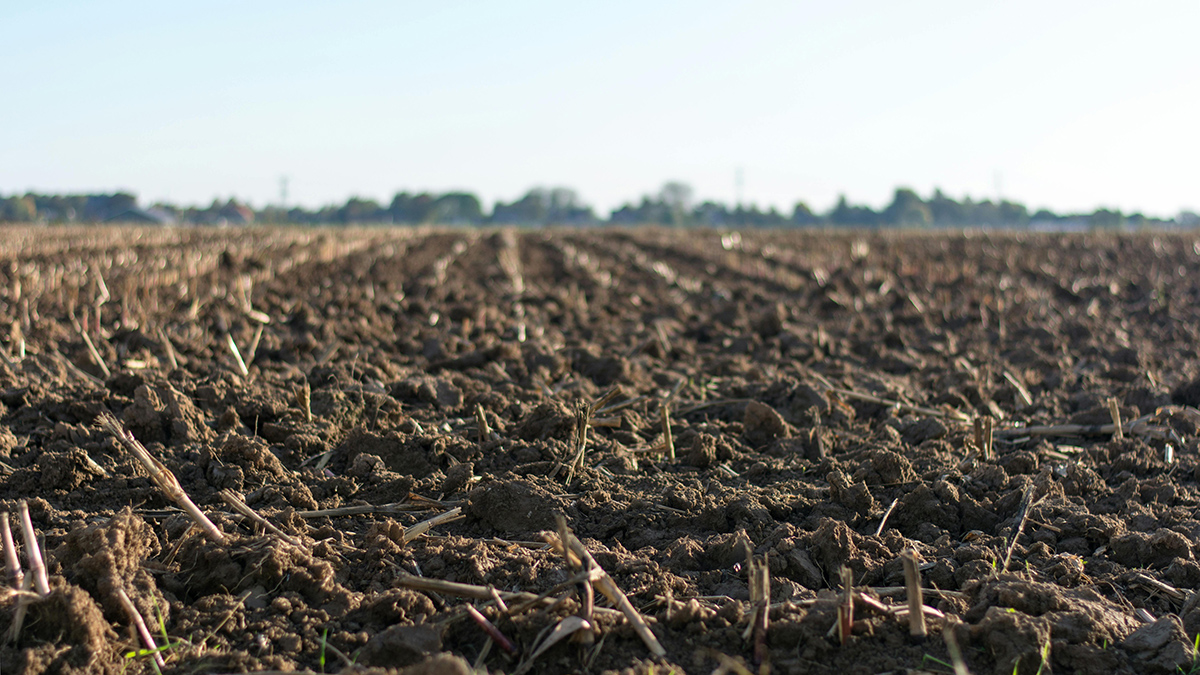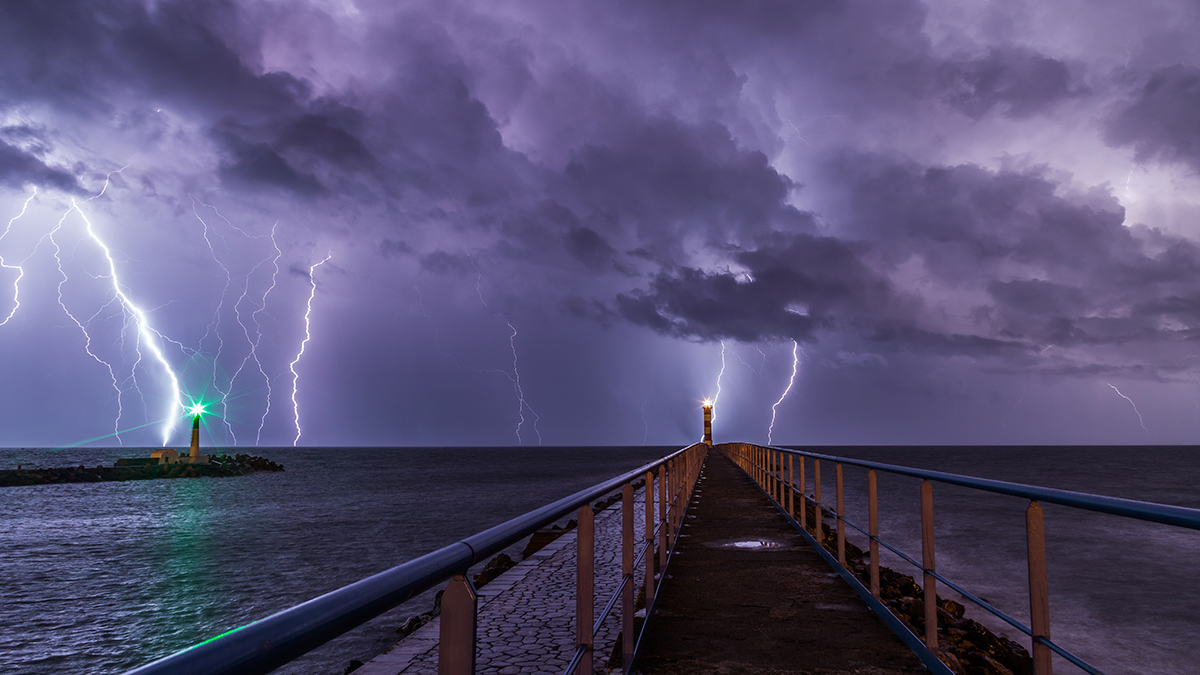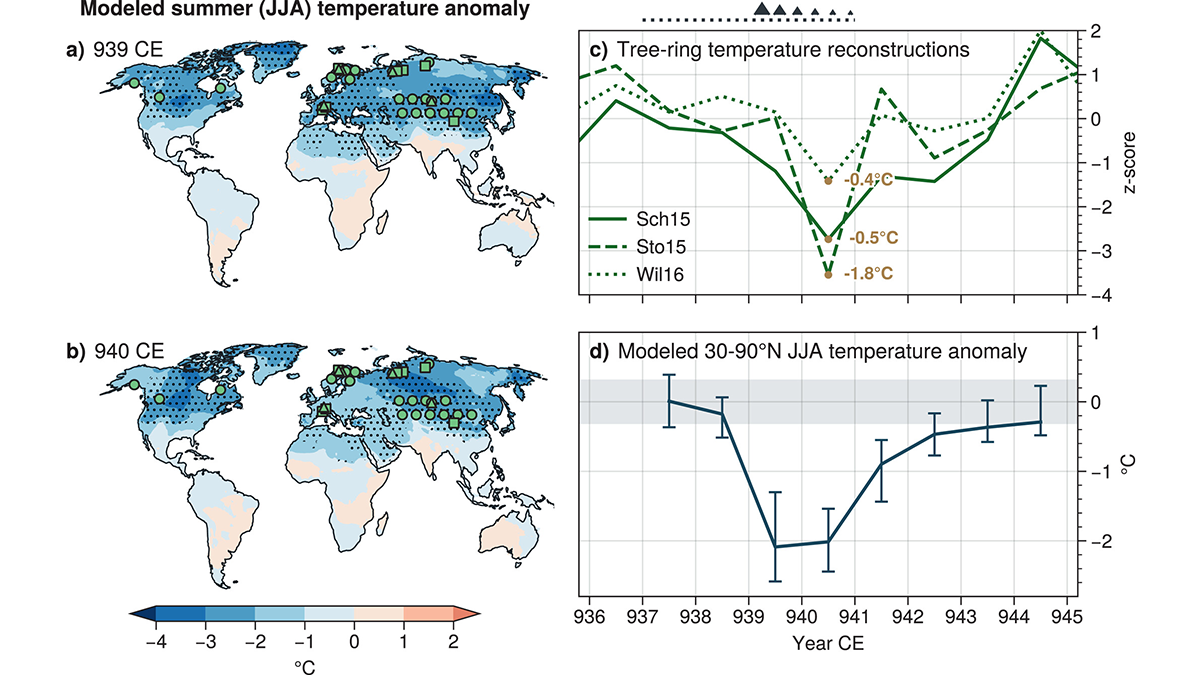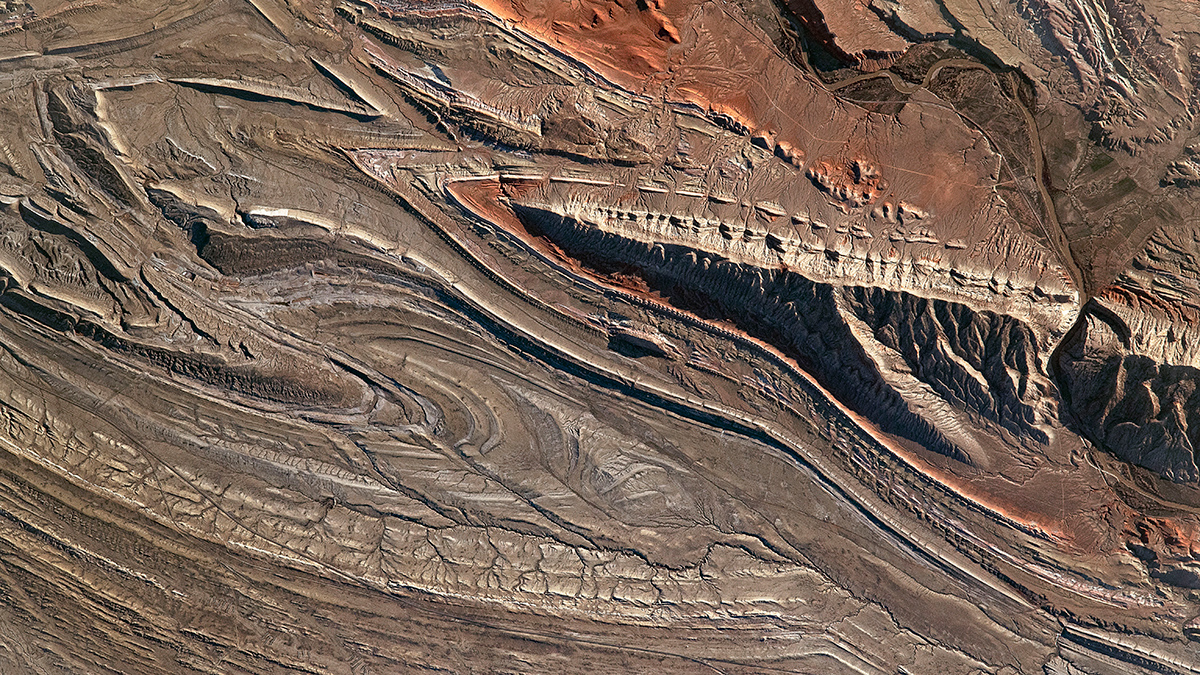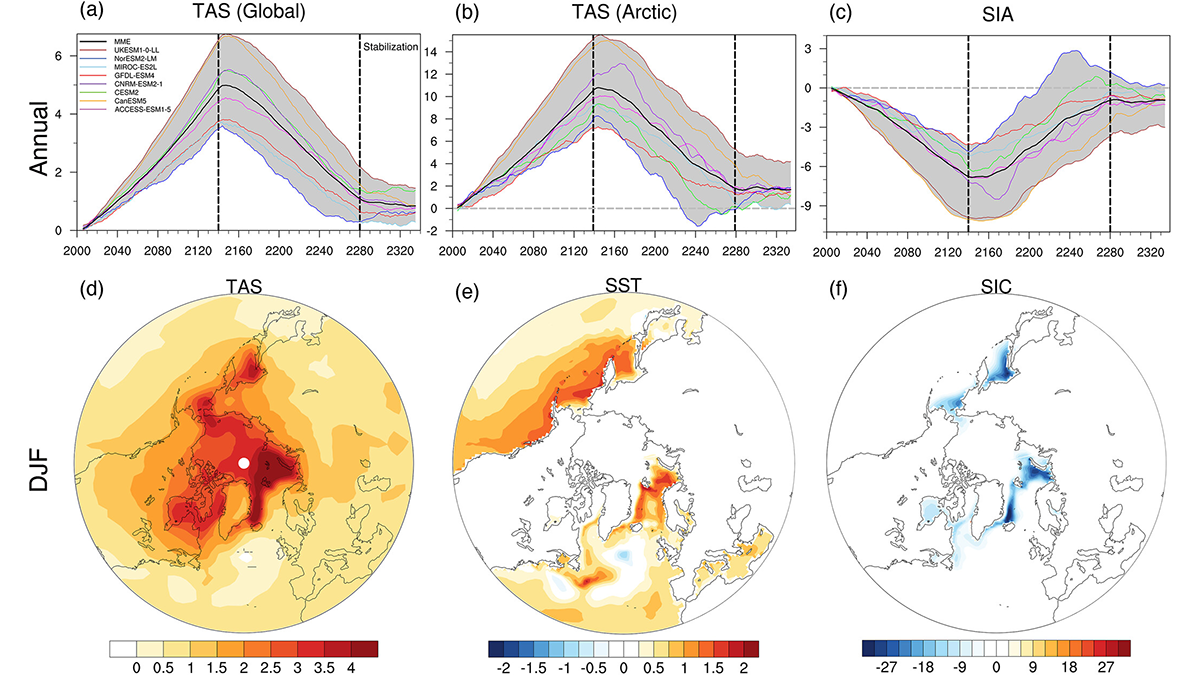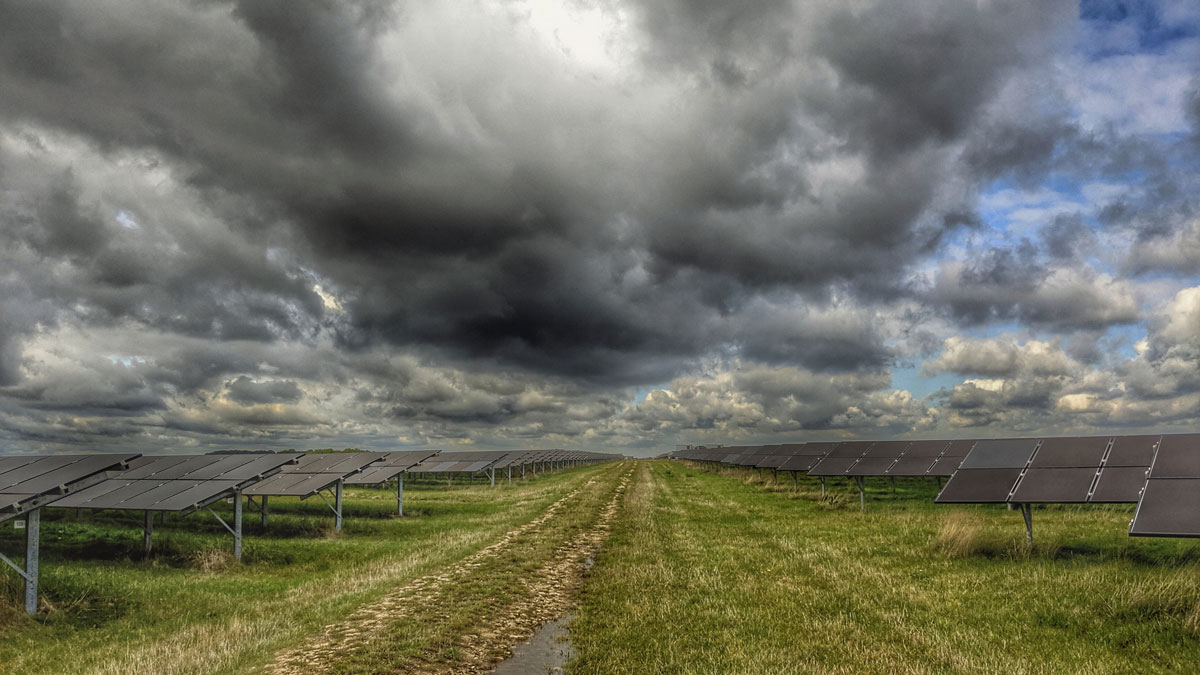High-latitude variations in density, which appear to be driven by changes in atmospheric pressure, can propagate to midlatitudes and affect the current’s strength within just a year.
Geophysical Research Letters
Simplicity May Be the Key to Understanding Soil Moisture
A pared-down model that considers only precipitation and net surface radiation seems to solve long-standing problems.
Storm Prediction Gets 10 Times Faster Thanks to AI
Forecasters hope new algorithms will lead to earlier warnings of when dangerous weather is on the way.
Inferring River Discharge from Google Earth Images
Critical flow theory can predict river discharge based on the spacing of standing waves captured by Google Earth images.
Revised Emissions Show Higher Cooling in 10th Century Eruption
The associated cooling from the Eldgjá eruption is larger than previously predicted and better matches tree-ring temperature reconstructions based on updated estimated emissions.
An Ancient Warming Event May Have Lasted Longer Than We Thought
New research on the Paleocene-Eocene Thermal Maximum used probabilistic analysis to learn more about its duration and how long modern warming could affect the carbon cycle.
Beyond Up and Down: How Arctic Ponds Stir Sideways
Contrary to common assumptions, Arctic ponds mix in more than one direction. A new study finds that nighttime sideways flows, not vertical mixing, renew bottom waters.
二氧化碳恢复后的北极海冰:对北大西洋天气的影响
北极海冰恢复不完全导致冬季急流向赤道偏移。由于海洋环流起到了额外的驱动作用,北大西洋急流的偏移尤其不确定。
Why the Southern Alps Turned Red During the Summer of 2019-2020
Snow on the Southern Alps turned from white to red in 2019-2020. New geochemical evidence points to the color change resulting from red Australian desert dust carried across the Tasman Sea.
Solar Power Shortages Are on the Rise
More communities are relying on solar power as a source of renewable energy, but increasing demand and climate change threaten its reliability.


